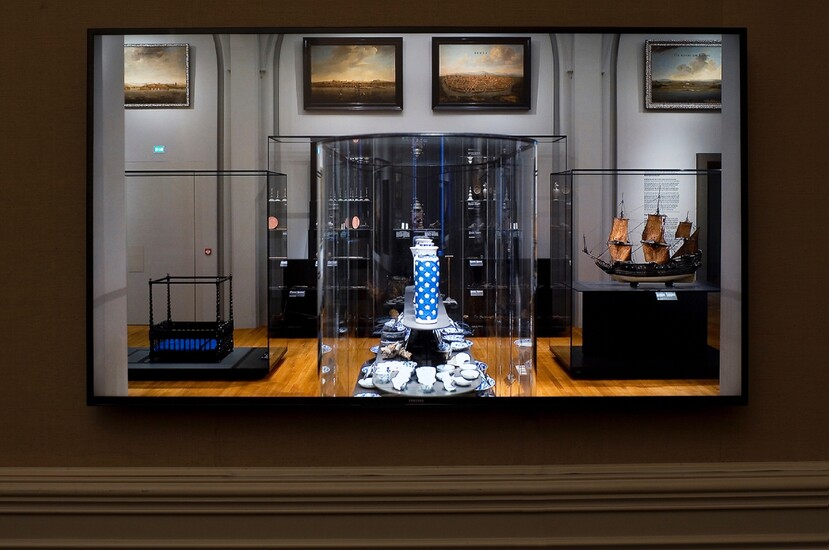The installation consists of a replica of the painting "Judea" and a two-channel video. The replica is made with precision by a Dutch art restorer through studying the original painting at Rijksmuseum. One channel of the video is a still recording of the original painting with a voice over by Dutch art historian Gijs van der Ham explaining the painting of "Judea". The second channel is a video inspired by Constantine Phaulkon, the Greek counsellor to Siam’s King Narai in the 17th century.
The title work of the exhibition "Judea" borrows its name from the title of the painting "View of Judea, the Capital of Siam", attributed to Dutch painter, Joannes Vinckboons in the 1660s. This painting is currently stored in the Rijkmuseum in Amsterdam. For some reason, "Ayutthaya", the capital city of Siam (Thailand) during the Ayutthaya Kingdom in 1351-1767 was known as "Judea" by the Dutch in their phonetic transcription.
This difference in naming brings about the limitation of knowledge through words and symbolic used for phonetic comparison. The distinguishability between two different languages results in “Judea” as a sample of misinterpretation. Furthermore, “Judea” coincidentally is also the ancient biblical, Roman, and modern name of the mountainous southern part of Palestine. The exhibition aims to present the complex of cultural topology through the history since colonization until today. The missed of phonetic transcription is part of the missing links of today’s network of communication in the flux of cultural topology and it shows the differences in the repetition of the similarity.
Detail pictures:




